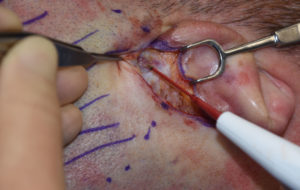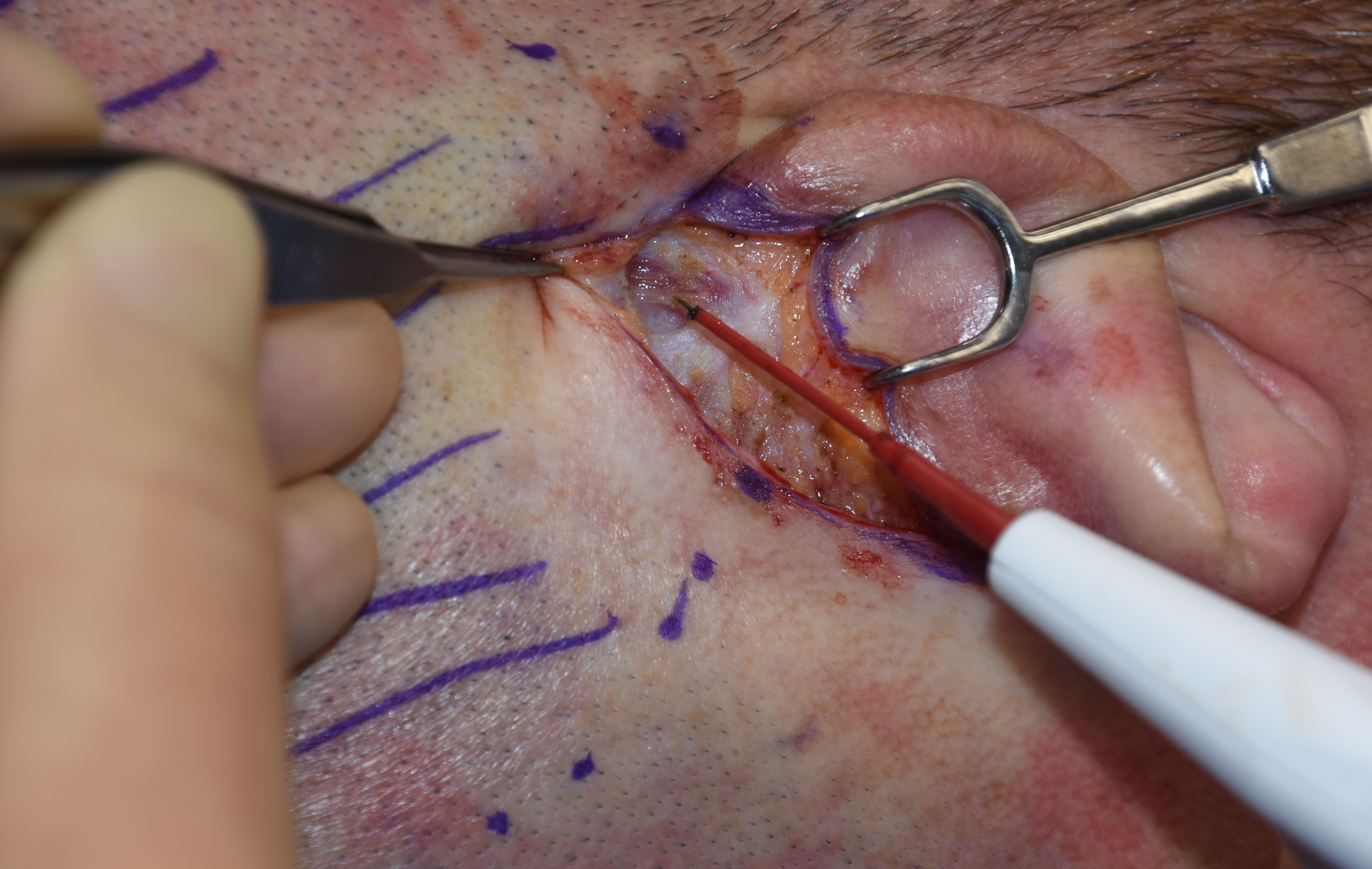Temporal reduction is an innovative surgery to reduce the width of the side of the head. While most think that the side of the head is composed of bone based on its firm feel, a significant part of its thickness is actually muscle. By removing the full-thickness of the posterior portion of the temporal muscle the side of the head can be changed from a convex shape to a flatter one.
The temporal reduction procedure is performed through an incision in the postauricular fold on the back of the ear. This invisible incision makes it a more appealing operation for many men with close cropped or shaved hair…which make up the majority of patients who have the surgery. When making this dissection past this skin incision down to the deep temporal fascial, multiple muscles may be encountered. These are the postauricular muscles.

The relevance of this discussion is that I had a temporal reduction patient recently who asked if the movement of his ears (up and out) when he smiled would be gone after the surgery. He desired it to be since he found it undesireable. Through the necessary release of the postauricular muscles and superior auricular attachments , I suspect that such ear movements would be inadvertently abolished in the temporal reduction surgery process.
Dr. Barry Eppley
Indianapolis, Indiana



